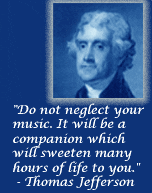
What is Classical Music? Part 3 – Lost in Transcription
By Ralph Graves
In parts 1 & 2 I talked about what I personally define as classical music (at least for the purposes of choosing works to broadcast). Part 1 offered the core definition — true piece of classical music is the creation of a single mind. Part 2 looked at one of the problems with that definition — what about early music where that single mind wasn’t very specific about things?
A reader asked a valid question: what about arrangements and transcriptions? It’s another area of messiness. The Canadian Brass have a fine arrangement of Vivaldi’s “Four Seasons,” but it doesn’t fit my personal criteria. Vivaldi very clearly orchestrated the work the way he wanted it heard — and it didn’t include any brass!
But while modern transcriptions of baroque and renaissance works are easy to classify, others blur the line.
It was a common practice in the 1800’s to offer piano transcriptions of orchestral (and sometimes chamber) works. Some of it was hackwork, but not always. Brahms created piano four-hands versions of his symphonies. When it’s the original composer making the decisions as to what get emphasized, what goes to the background, etc., it increases the validity of the transcription in my opinion (enough that I might actually air it).
Composers regularly create concert suites out of their ballet and opera scores. All perfectly legit. But what if one composer arranges the music of another?
Many professional arrangers are very, very good — but their arrangements tend to be facile and superficial. The Browns aren’t interested in a five-piano version of Schoenberg’s piano music — they want crowd pleasers like “Rhapsody in Blue!”
Mussorgsky wrote “Pictures at an Exhibition” as a solo piano work. But Maurice Ravel’s orchestration of it has becom part of the repertoire. So is it legit? I think so, because Ravel’s added depth to the work through his orchestration (although I would still think it important to hear the original).
Brahms’ “Variations on a theme by Haydn” uses Haydn as a starting point and constructs original material around it — definitely legit. And Brahms wrote both an orchestral version and a two-piano version (both of which I’ve aired).
For me, whether a transcription or arrangement works depends on whether the composer did it themselves (legit), or brought something musically significant to the original work (like Ravel did for Mussorgsky, but not like the Canadian Brass’ arranger did for Tchaikovsky).
But wait, there’s more. What about works started by one composer and finished by another? We’ll save that discussion for another post!

